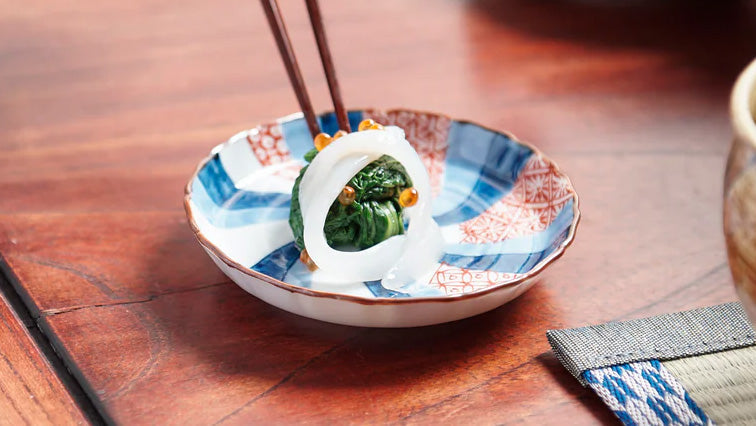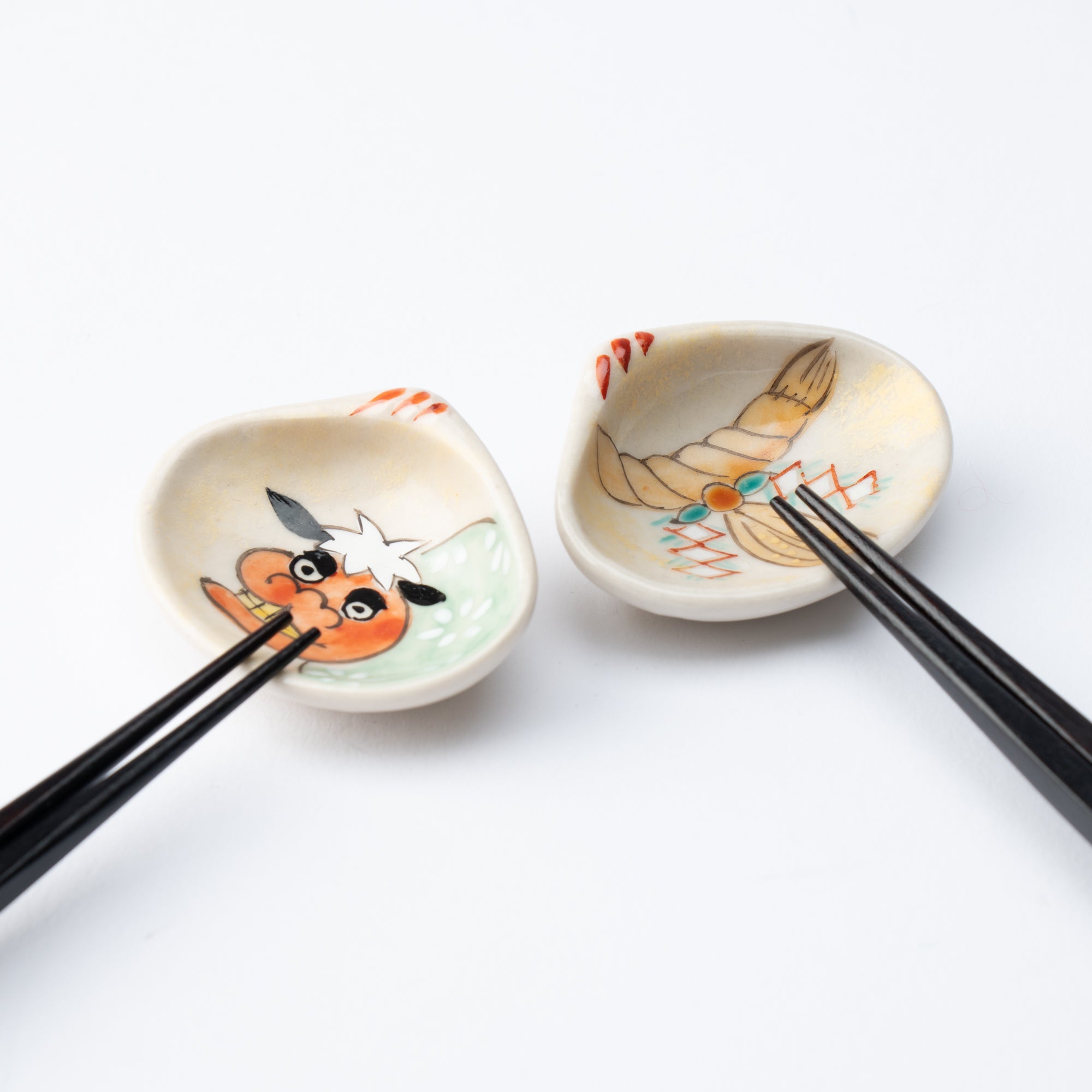
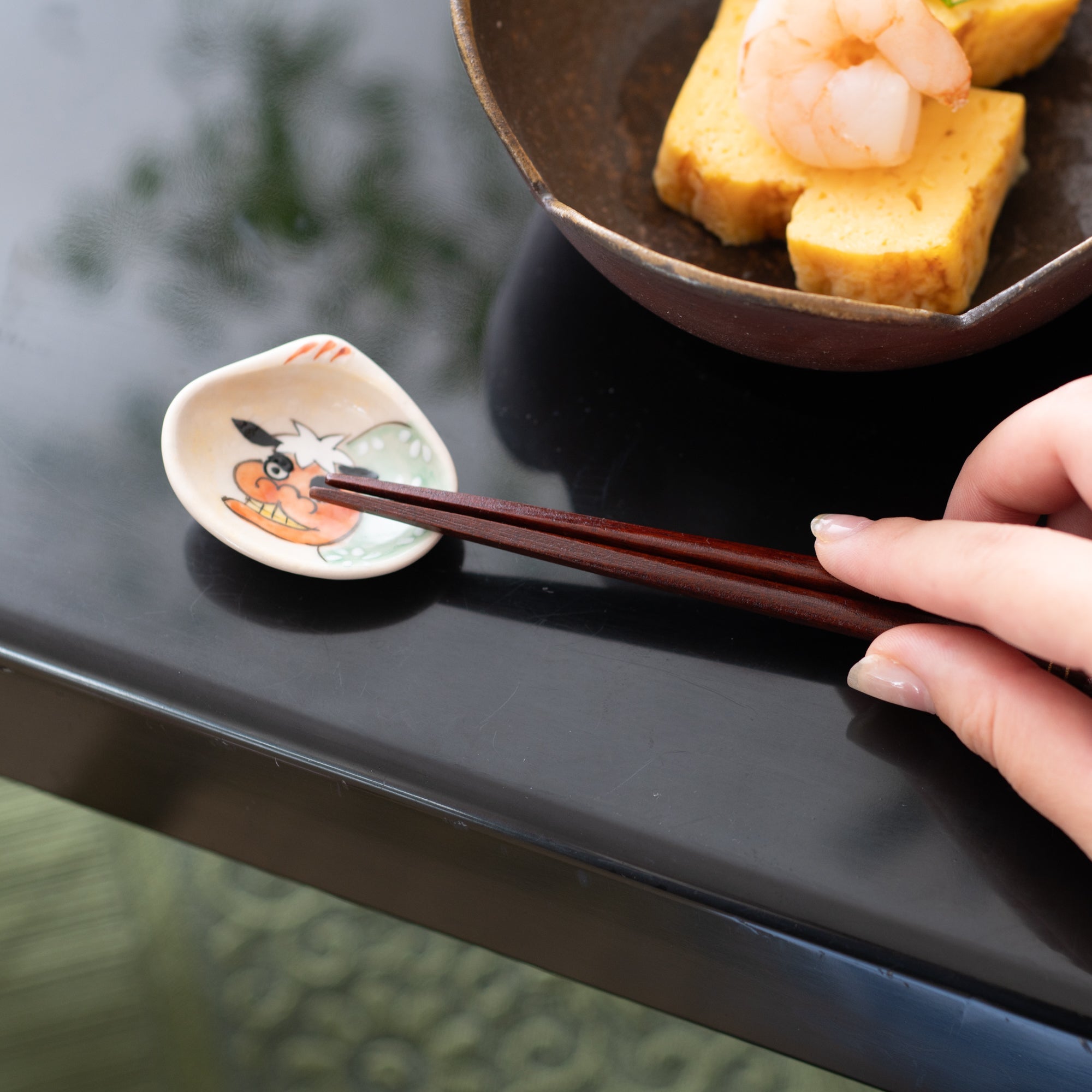
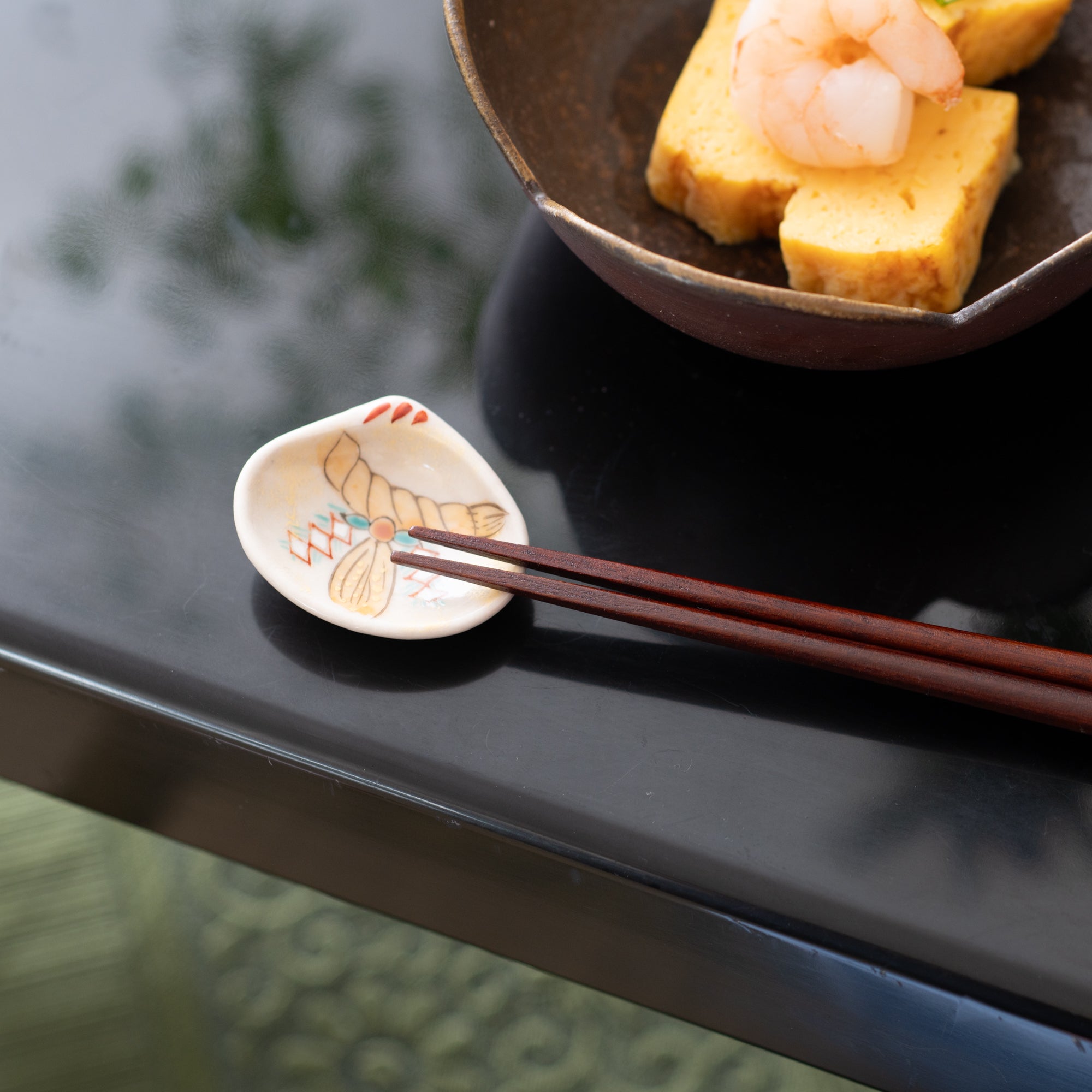
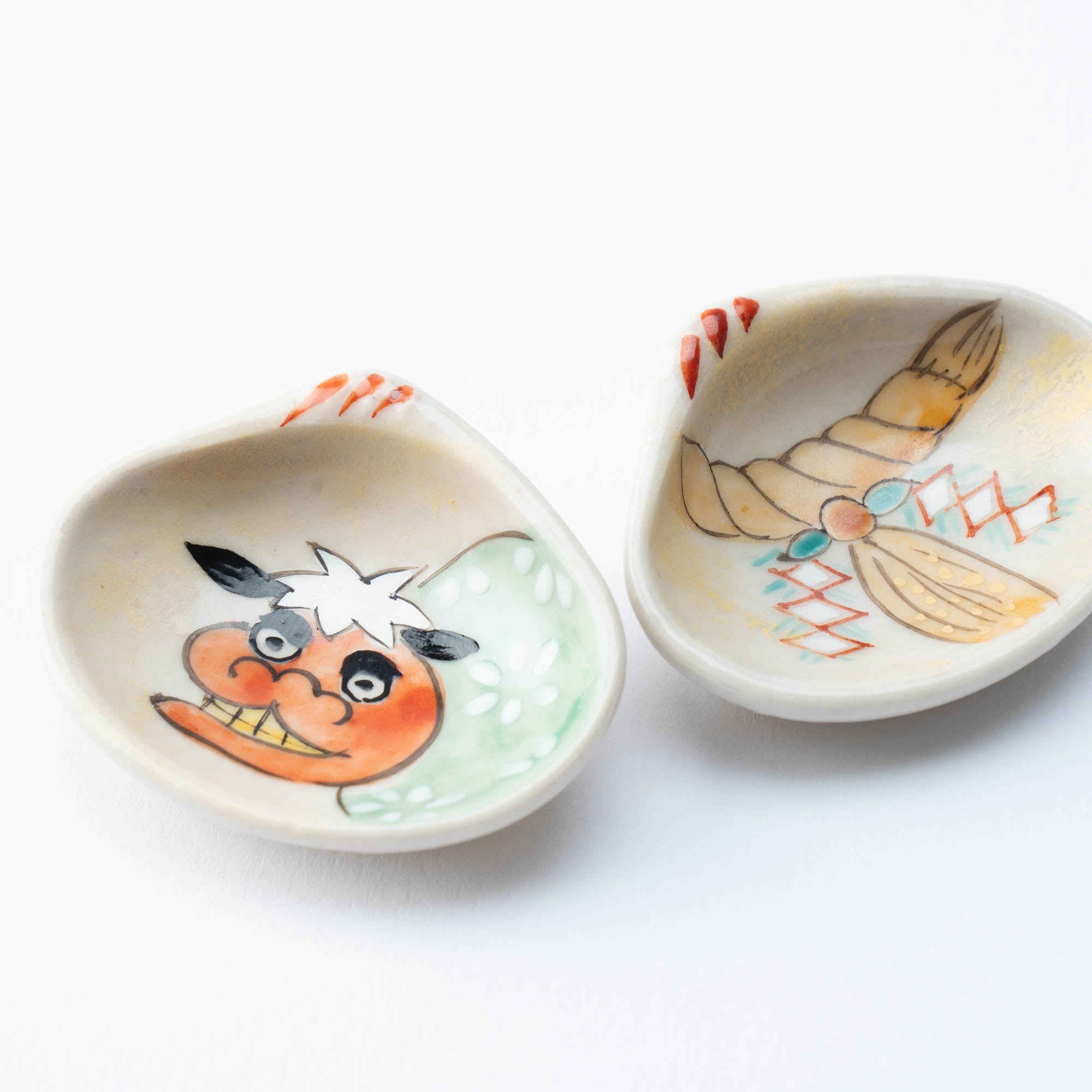
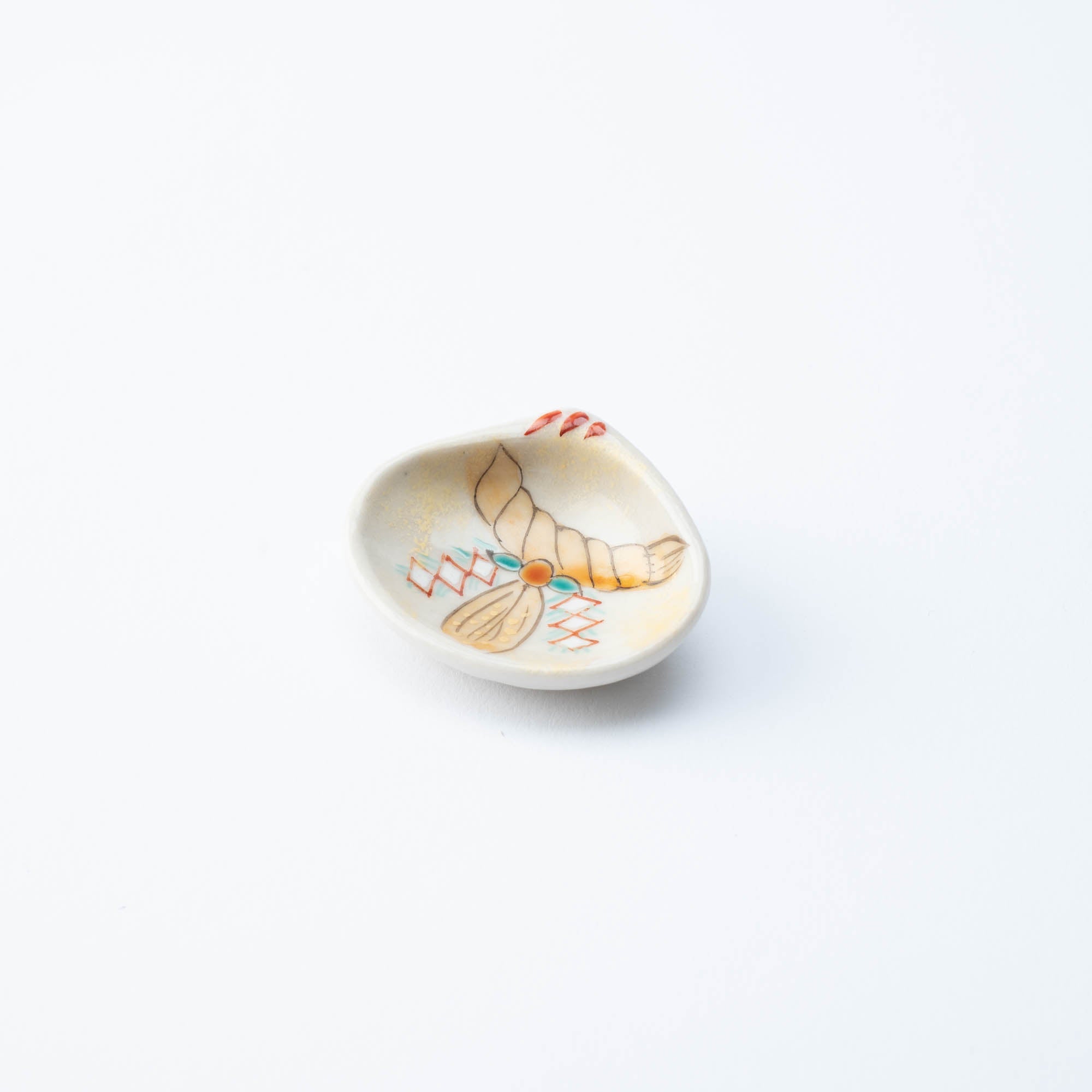
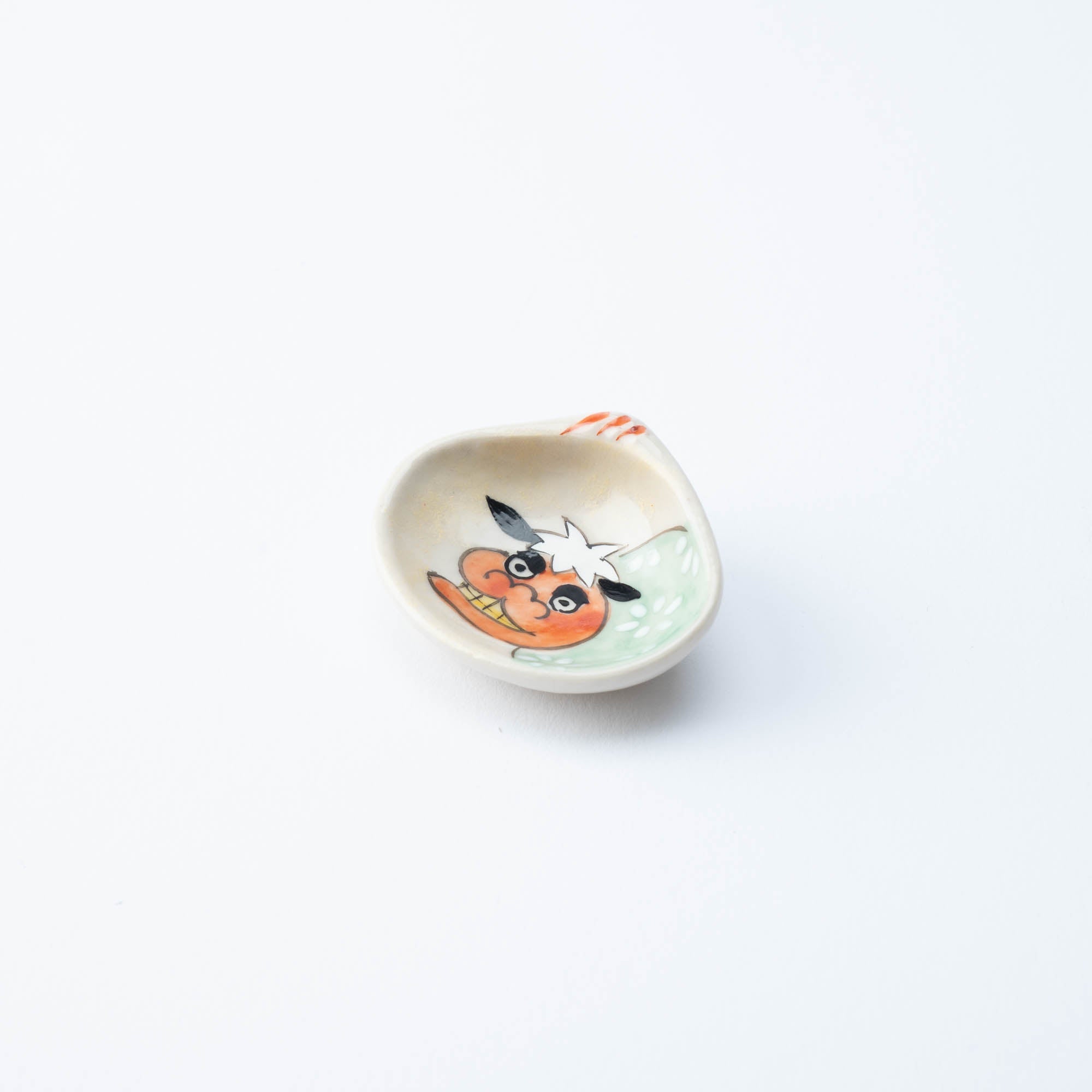
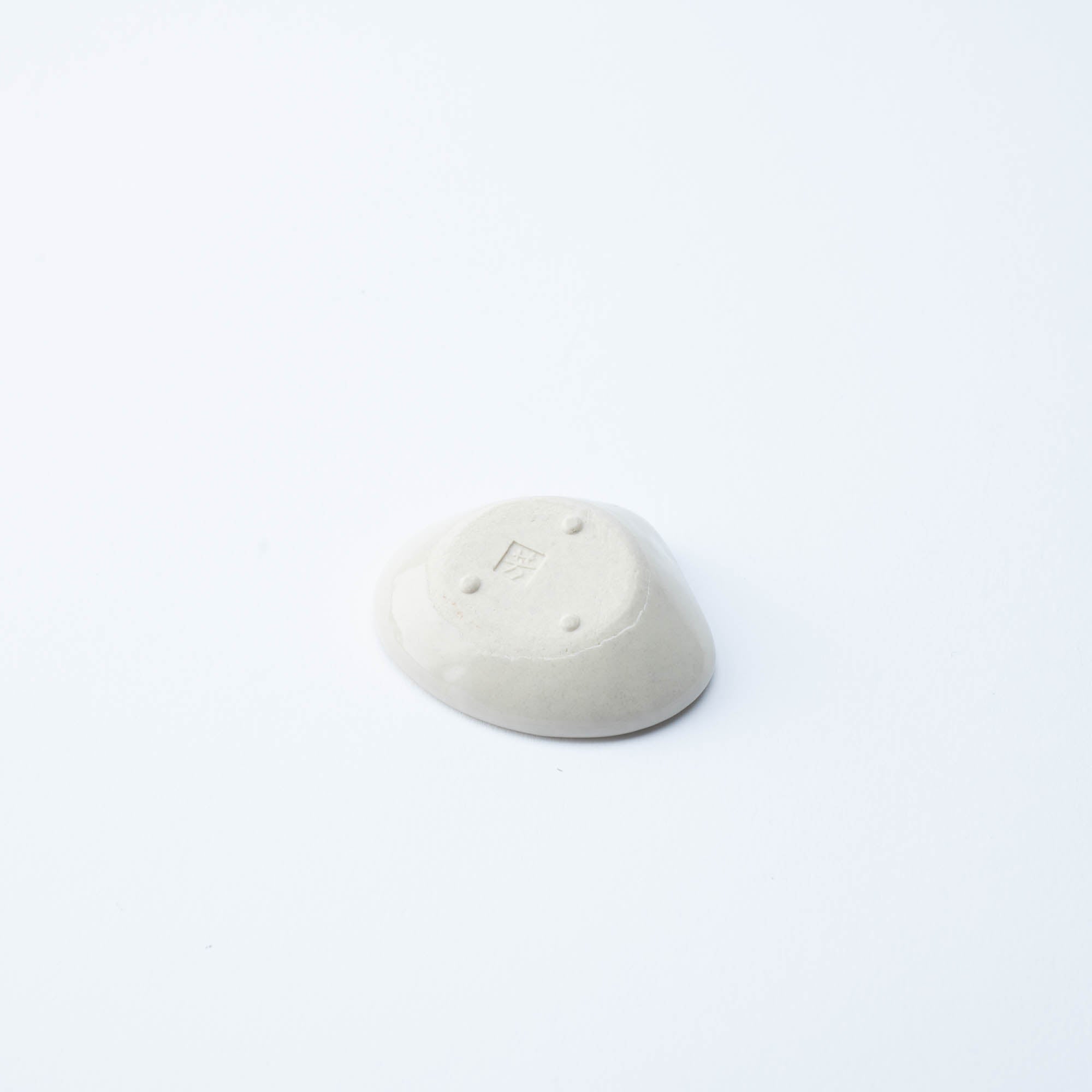
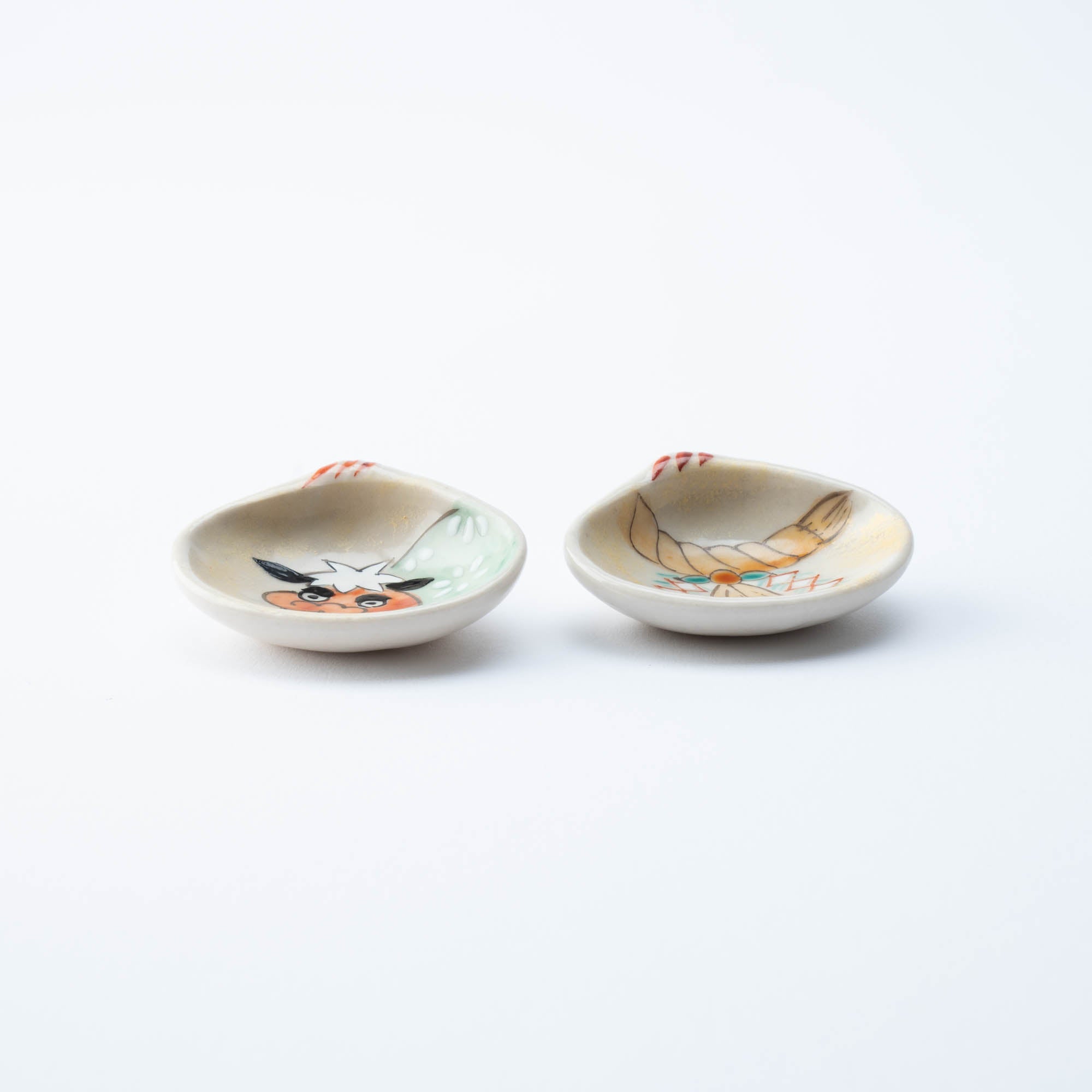
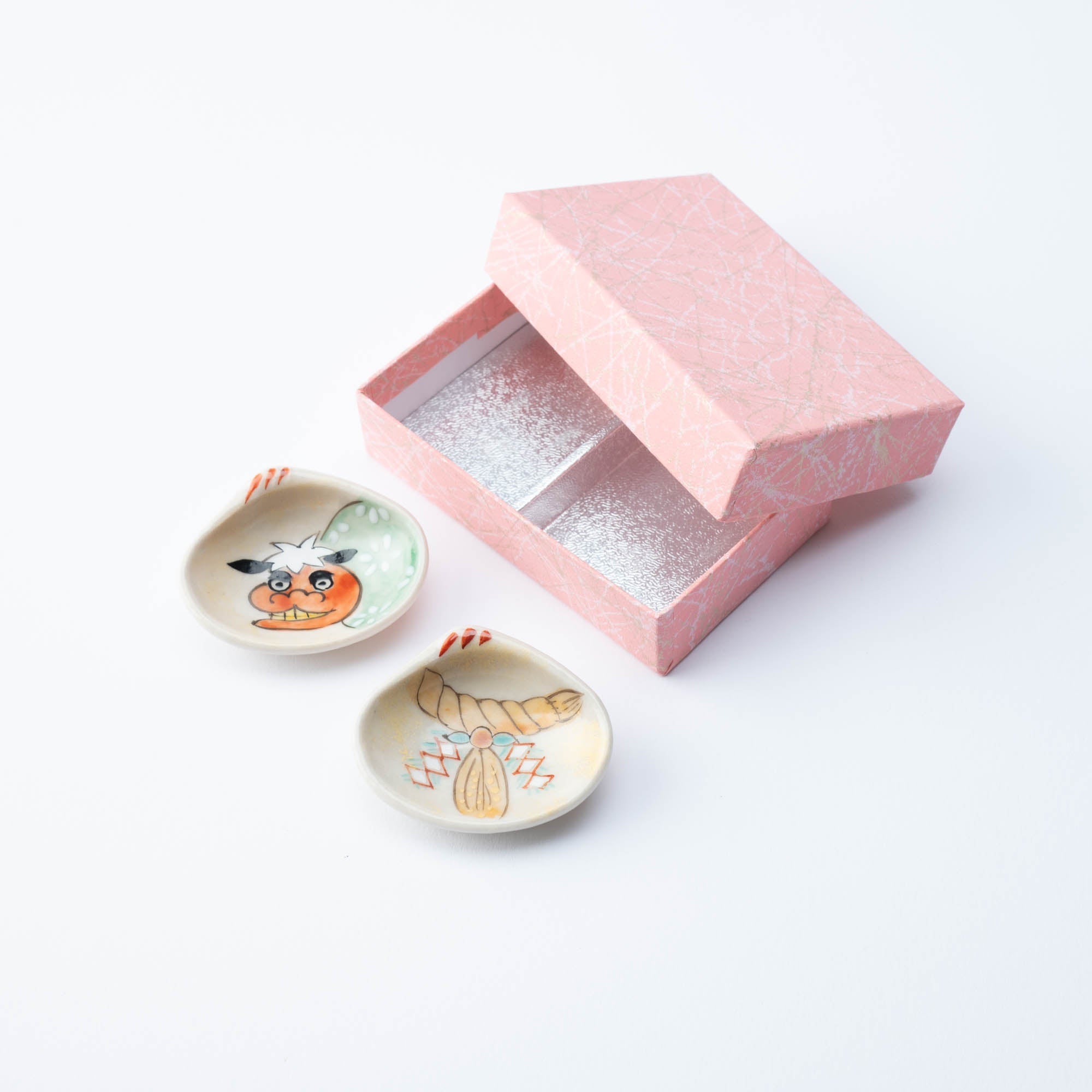
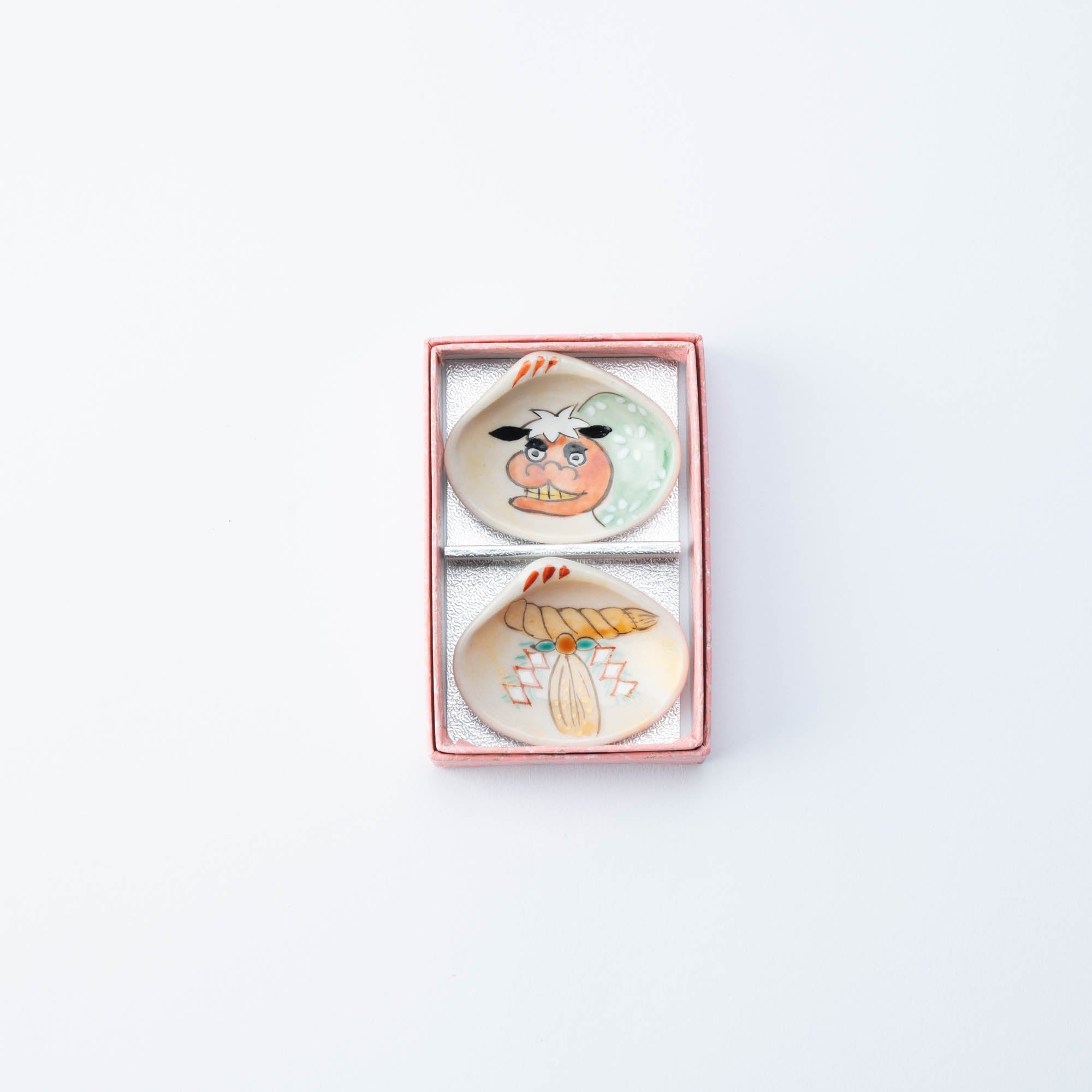
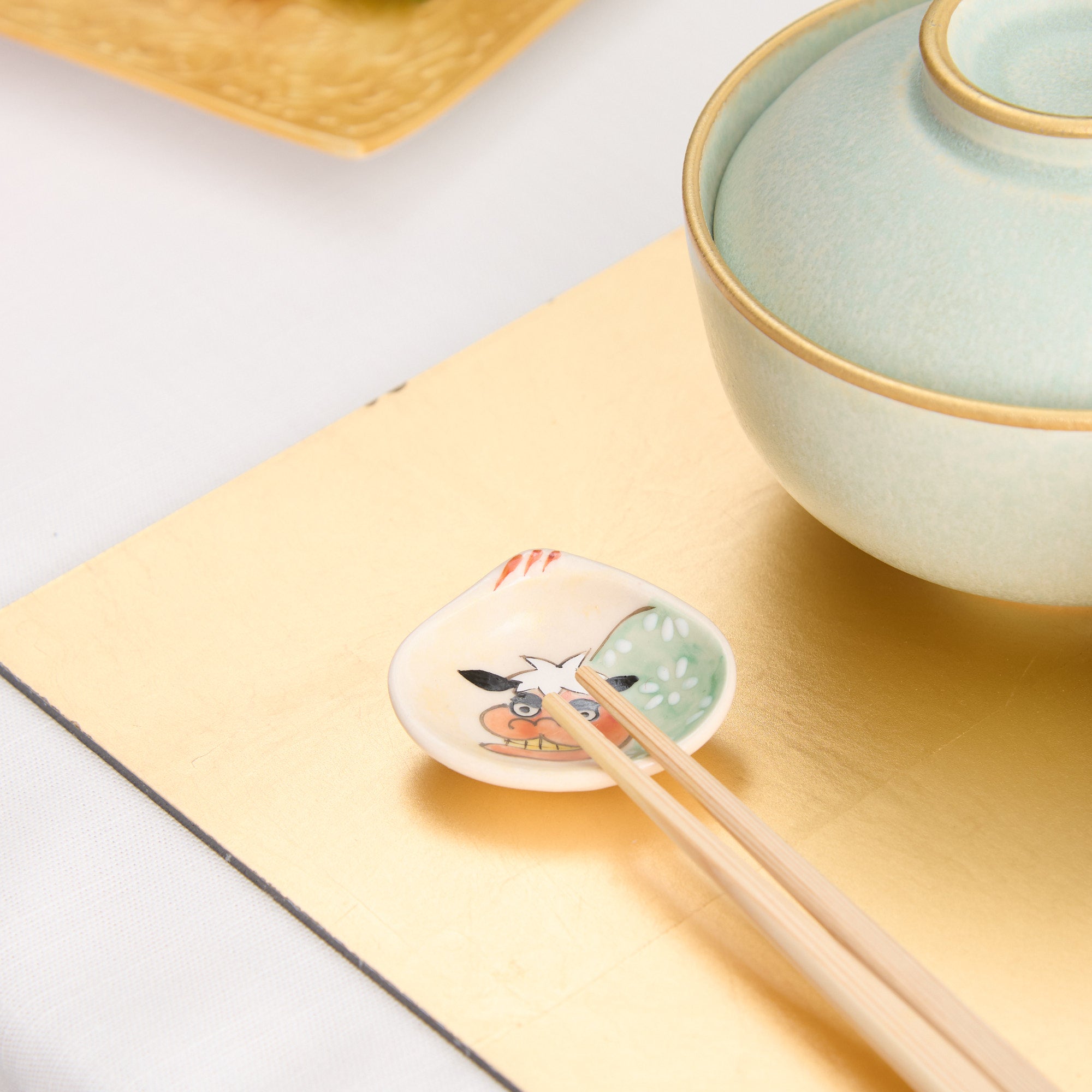
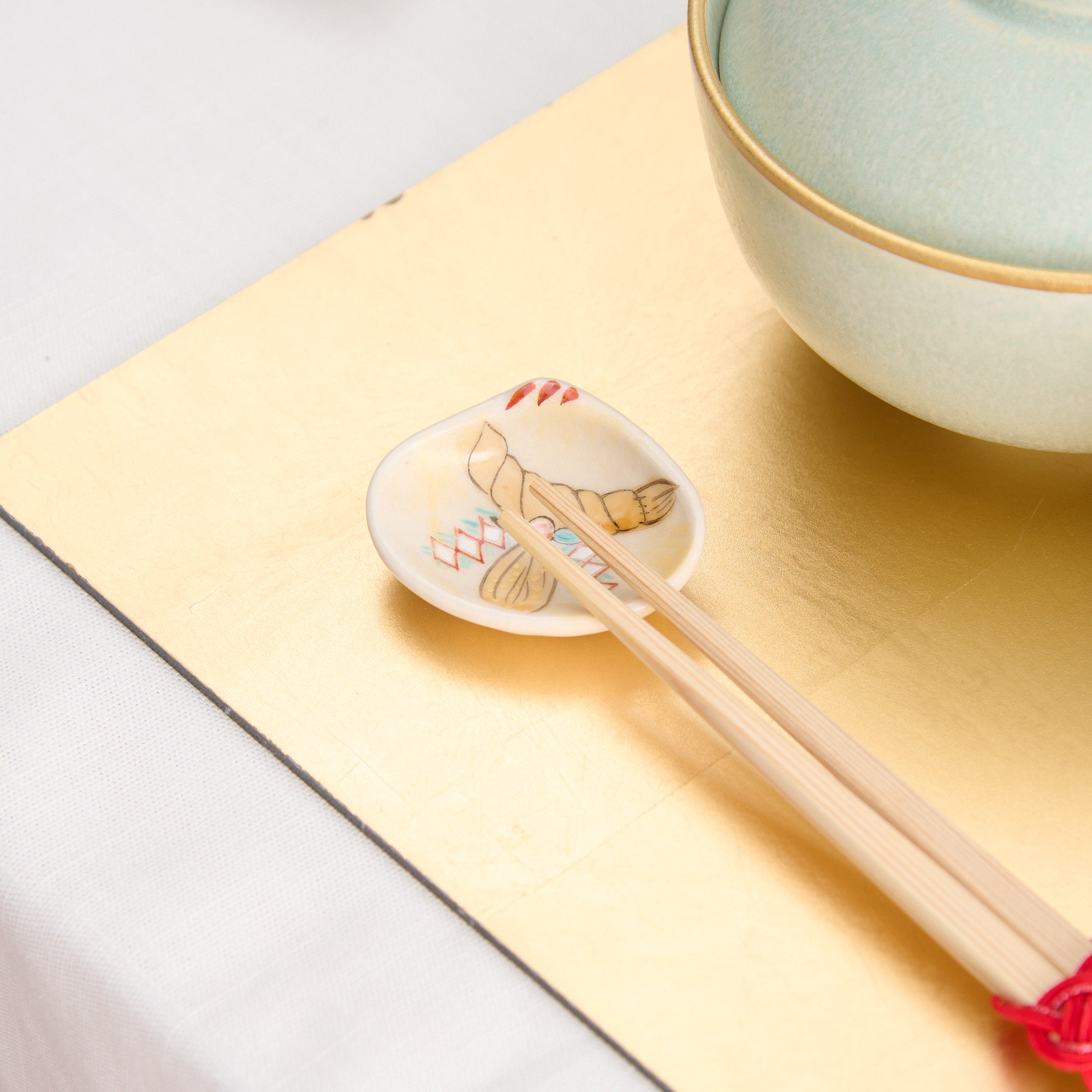
Shishi-mai und Shimenawa Essstäbchenablage Satz
Estimated Shipping Widget will be displayed here!
Dieses Essstäbchenablage-Set in Muschelform zeigt die traditionelle Löwenkopfmaske, die für SHishi-mai oder Löwentanz, und Shimenawa, die heiligen Reisstrohseile. Diese Artikel bieten Stabilität für Ihre Essstäbchen und eignen sich perfekt zur Verschönerung Ihres Neujahrs-Esstisches.
Shishi-mai wurde traditionell durchgeführt, um Dämonen und Epidemien abzuwehren, hat aber auch heute noch die Bedeutung, Unglück abzuwehren. Es wird oft zu glückverheißenden Anlässen wie Neujahr und Festen aufgeführt, da man glaubt, dass es Glück bringt. In diesem Geist des Schutzes und Segens kann man Trost im sanften Gesicht des Löwen finden, einem zentralen Symbol des Tanzes.
Shimenawa wird verwendet, um heilige Orte zu markieren, von denen man glaubt, dass sie zu den Orten gehören, an denen Gottheiten herabsteigen. Die Dekoration mit weißen Papierstreifen, Mandarinen und Kiefernblättern zum neuen Jahr symbolisiert die Begrüßung von Toshigami, der Gottheit der Lebenskraft, und verkörpert Gebete um reichlich Nahrung.
EINZELHEITEN
| Quantity | 2 pcs |
| Size | L 4 cm (1.5 in) x W 5 cm (2 in) x H 1.5cm (0.6 in) |
| Material | Stoneware |
| Package Type | Paper box |
| Microwave | No |
| Dishwasher | No |
Hersteller / Marke
Der Hozan-Ofen in Kyoto konzentriert sich hauptsächlich auf Unterglasur-Emaillierungstechniken, insbesondere gosu, und ist spezialisiert auf die Herstellung von netzbemaltem Geschirr und zart bemalten Essstäbchenablagen, die mit saisonalen Motiven verziert sind.
Die Geschichte von Hozan Kiln reicht bis ins Jahr 1951 zurück, als das Unternehmen als Kato Yukichi Seisakusho (Kato Yukichi Fabrik) gegründet wurde. Später wurde der Name in Hozan Kiln geändert. Der derzeitige Eigentümer, Kato Yoshitsugu, vertritt die dritte Generation.
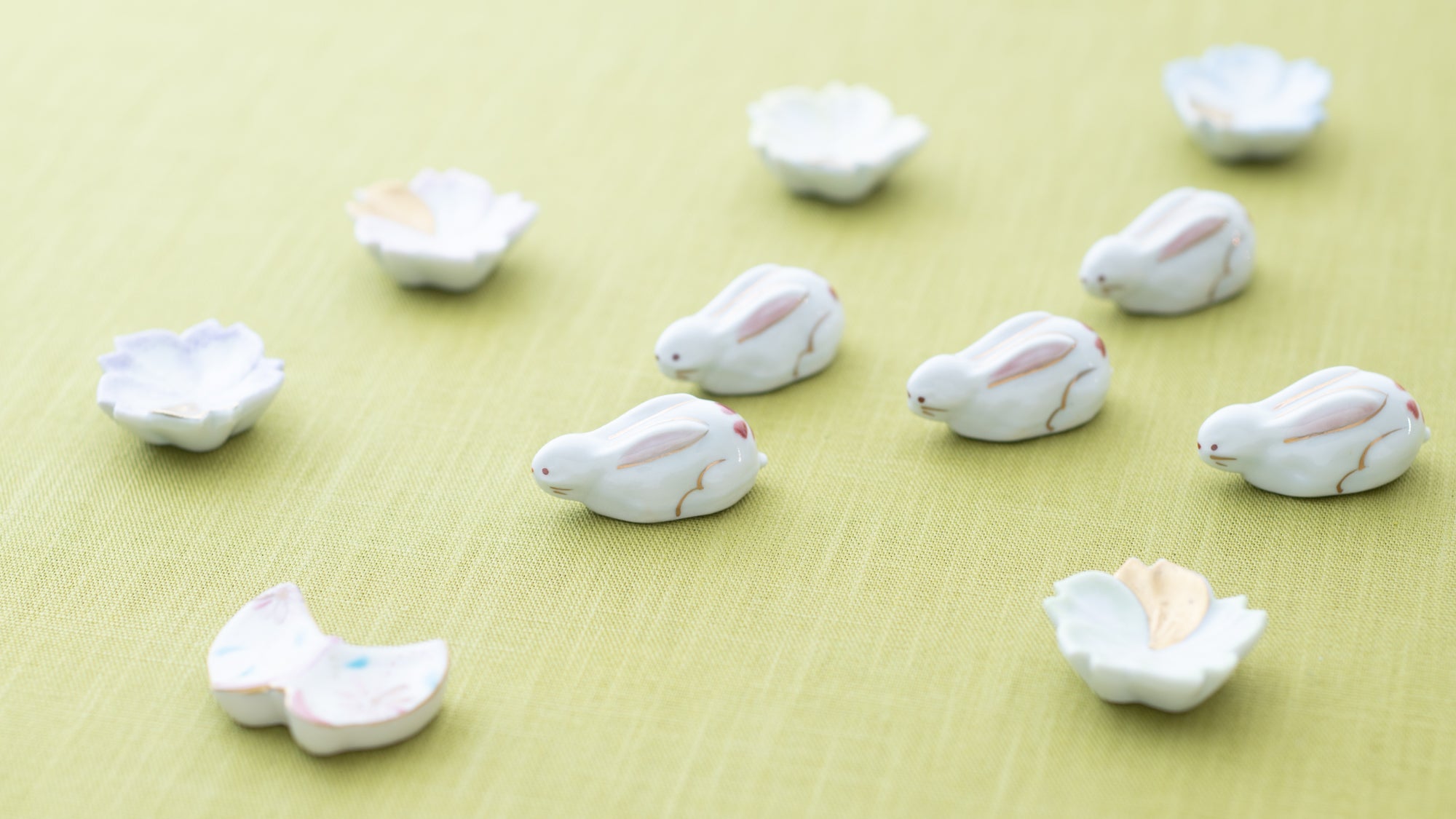
Kunsthandwerk
Kyo- und Kiyomizu-Ware, zusammen als Kyo-yaki und Kiyomizu-yaki bekannt, sind berühmte Keramikstile aus Kyoto. Bekannt für ihr lebendiges Design, ihre fein geformten Formen und die Liebe zum handwerklichen Detail, spiegeln diese Waren Kyotos unverwechselbaren Sinn für Schönheit und künstlerische Raffinesse wider.
Kyo- und Kiyomizu-Ware zeichnen sich durch eine lange gepflegte Vielfalt aus und greifen auf Techniken und Stile der Töpfertraditionen Japans zurück. So entwickelte sich eine ausdrucksstarke und typisch Kyoto-Kunstform. 1977 als traditionelles japanisches Kunsthandwerk anerkannt, werden sie bis heute wegen ihrer kulturellen Tiefe und Alltagstauglichkeit geschätzt.

Optionen auswählen












Estimated Shipping Widget will be displayed here!
Essstäbchenablagen
Essstäbchenhalter verleihen Ihrem Tisch einen Hauch japanischen Stils. Eine Mischung aus Alltagsgegenständen und besonderen Anlässen macht Ihren Tisch für jeden Anlass bereit. Wir haben handgefertigte Essstäbchenhalter aus ganz Japan ausgewählt, um Ihr kulinarisches Erlebnis noch angenehmer zu gestalten. Von verspielten Porzellanformen bis hin zu eleganten Metalldesigns verleihen diese kleinen Akzente jedem Ambiente einen besonderen Charme.
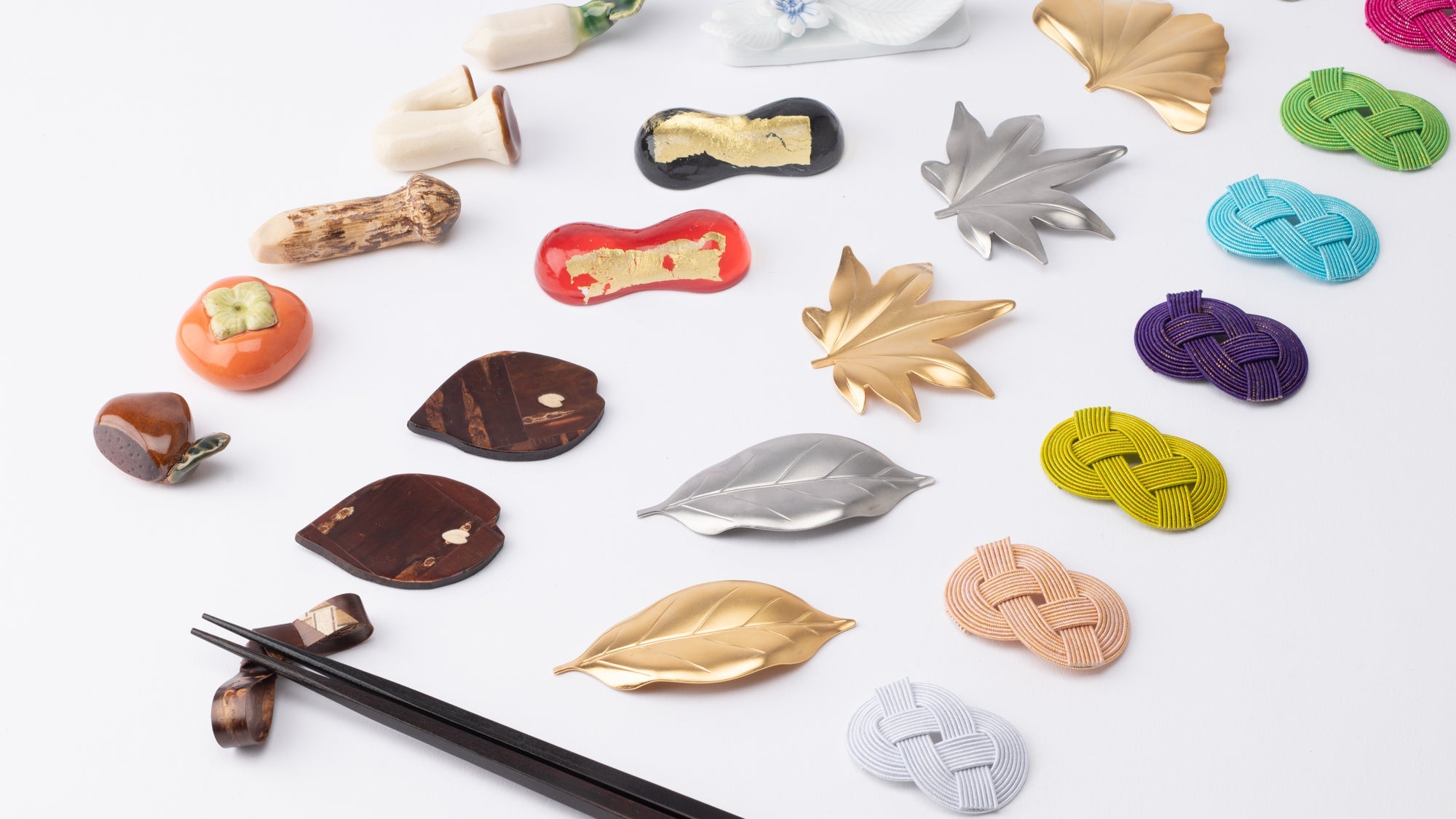
Porzellan
